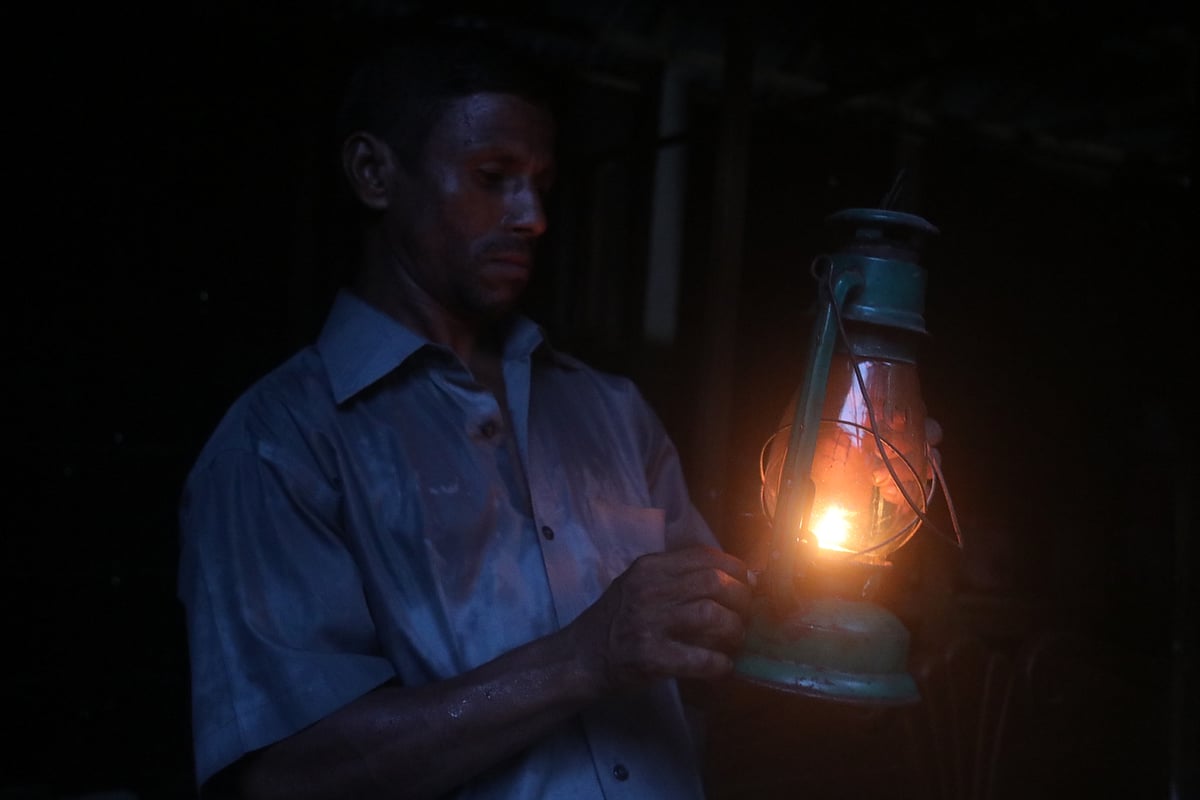
Load shedding hits rural areas before summer
As the electricity demand increases after the winter, load shedding is also on the rise, with people experiencing power outages in parts of the country for seven to eight hours daily.
A portion of power stations sits idle as the demand for electricity per day is yet to reach half of the total production capacity. Yet, fuel shortage disrupts power generation causing load shedding whereas the government cannot also provide adequate taka and US dollars to import fuel.
According to the power division sources, demand for electricity is now about 12,000MW per day and this may increase to 17,000MW during the summer beginning in April. If the fuel supply does not increase, the load shedding situation may deteriorate.
Currently, the country has a capacity of generating about 26,000 MW of electricity, according to sources at the power division, Bangladesh Power Development Board (BPDB) and Power Grid Company of Bangladesh (PGCB). On Monday, demand for electricity peaked at 12,400MW at 3:00pm, but the power supply fell short of 757MW on the day, and that was met with load shedding. Maximum 1,000MW of load shedding occurred at 8:00pm on Sunday, which was also a public holiday.
No load shedding occurs in Dhaka because of the power deficit, according to Dhaka Power Distribution Company Limited (DPDC) and Dhaka Electric Supply Company Limited (DESCO). Power outage hits parts of the capital due to technical glitches. Power distribution companies BPDB, Northern Electricity Supply Company Limited (NESCO) and West Zone Power Distribution Company Limited WZPDCL) said no load shedding occurs in other cities.
Reliable sources of Bangladesh Rural Electrification Board, which supplies electricity in most of the rural areas, said power supply does not meet demand. The agency also received 800MW less than their demand on Sunday. Major load shedding was reported from Mymensingh, Netrokona, Jamalpur and Sherpur districts of the Mymensingh division. Power outages also hit parts of Tangail, Pirojpur and Cumilla districts.
BPDB member (generation) Khandaker Mokammel Hossain told Prothom Alo that the gas supply is less than the demand, resulting in a low generation of electricity from gas-powered power stations and causing a power deficit. All-out effort is on to increase power generation and the power situation is likely to improve in the coming days, he added.
Currently, the demand for gas is 2.32 billion cft per day in the country’s power sector. The BPDB demanded the supply of at least 1.50 cft of gas during this summer. Currently, the gas supply stands at 880 million cft per day, which is why more than half of the production capacity of the gas-fired power stations remains idle. Daily power generation reached a maximum of 4250 MW on Monday. Besides, LNG import also dropped as one of the LNG regasification terminals remains shut, and that is likely to resume operation in end-March.
Power generation capacity from coal stands at 4,500MW, and currently, coal-fired power stations are mostly in operation with a maximum of 4,000 MW of electricity being generated daily. Privately-run furnace oil-fired power stations owe a large amount of money to the BPDB and they are also not getting US dollars to import fuel. As a result, they are generating less than 1,000MW of electricity during the day and a maximum of 2,500MW at night against their capacity of about 7,000MW.
More load shedding in Mymensingh
Load shedding occurs more in rural areas of Mymensingh. Some places even remain without electricity for seven to eight hours. Azharul Islam is from the district’s Tarakanda upazila.
He told Prothom Alo that the crisis hit agricultural production and farm operations due to load shedding.
Indrajit Debnath, executive engineer, Sales and Distribution Division-1(N), BPDB, Mymensingh, said the matter of growing load shedding was discussed at the coordination meeting of the Mymensingh district administration on Monday.
Mymensingh Palli Biduyut Samiti-3 supplies electricity to Haluaghat, Dhobaura, Phulpur, Tarakanda, Ishwarganj, Nandale and Gouripur upazilas. Its general manager Md Abul Kalam Azad told Prothom Alo that 55MW of electricity was supplied against a demand of 75MW at 11:00am on Monday.
No uninterrupted electricity despite tariff hike
The power authorities maintained load shedding for more than three hours on an average daily over the past two years as power stations went out of operation due to fuel shortage. This time, the situation is also unlikely to get better. Whether in operation or not, as per the agreements, the public or private power plants receive rent, which is known as the capacity charge, and Tk 260 billion was paid in capacity charge last year.
Meanwhile, the power tariff increased by 5 per cent three times last year and by 8 per cent this February.
Consumers' Association of Bangladesh (CAB) vice president M Shamsul Alam told Prothom Alo that load shedding really occurs more than the government’s data. The electricity is not supplied uninterruptedly. Yet, the cost of additional production capacity is being paid, and the power tariff is being hiked in phases instead of supplying uninterrupted electricity.
Prothom Alo’s correspondents from Mymensingh and Netrokona contributed to this report.